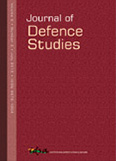China in SAARC? Too Early to Worry: A Response to ‘China in SAARC? To What Effect?’ by Sujit Dutta
Professor Sujit Dutta's article, ‘China in SAARC? To What Effect?’ has made an excellent case for the desirability of regionalism as it offers public commons to members of such institutions. Indeed the EU and ASEAN are prime examples of such cooperation as they generate political, economic and security benefits for their members, though to different degrees.
- Shen Dingli
- May 2011












